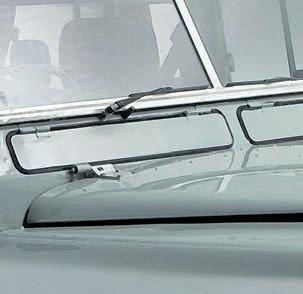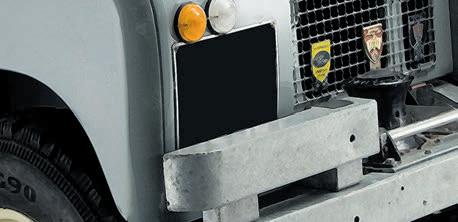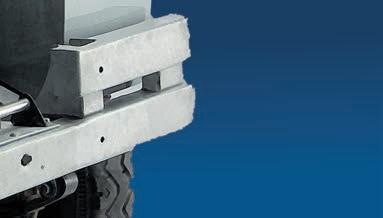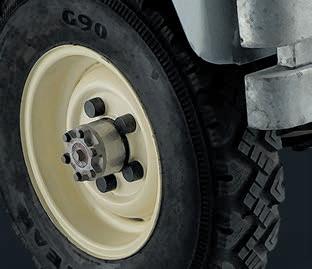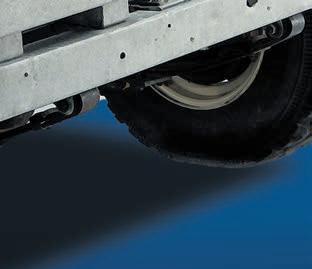




















































































Whether your idea of an expedition is an afternoon driving some local trails, a weekend off road and wild camping or a full-on trip across Africa, Terrafirma has all the accessories you will need. From roof racks and ladders to spare wheel carriers and snorkels, from jerry cans and sand tracks to fridges we have it covered with this extensive range of expedition accessories.
THE WORLDS BEST ACCESSORIES FOR LAND ROVER
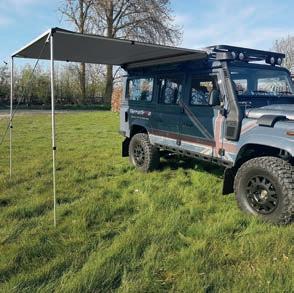

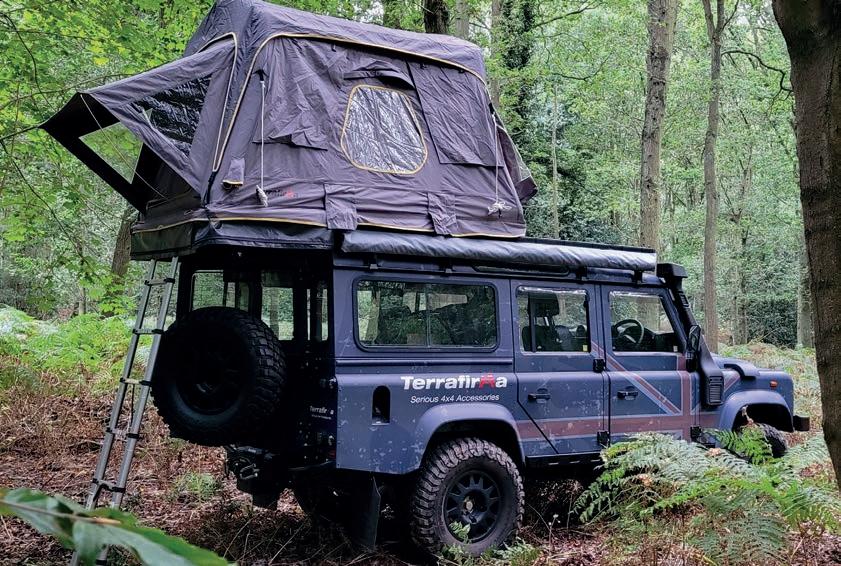









SPARE WHEEL CARRIERS

RAISED AIR INTAKES


EXPEDITION ACCESSORIES
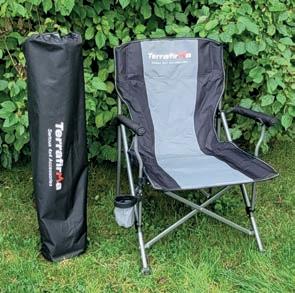
For more information visit www.terrafirma4x4.com email sales@terrafirma4x4.com









 ROOF
ROOF
ROOF
ROOF


LAND ROVER HAS REPORTED an increase in sales for the final quarter of the 2023 financial year, and for the year as a whole. The news comes as industry-wide supply constraints start to ease, with the global shortage of microchips in particular showing a much-needed improvement.

In total, Land Rover sold 87,455 vehicles in Q4 – an improvement of 35.7 over the same quarter in 2022. The biggest volume came from the Defender, which accounted for a little more than 25 of total sales, however the big climber was the Range Rover – which, having slowed during the last phase of L405 production, recorded a 201.6 increase following the launch of the new model. Interestingly, sales of both the Velar and Range Rover Sport dropped sharply over the course of the year as a percentage of total volume.
The problem child for Land Rover is clearly now the Discovery. Once the darling of the company’s dealerships, over the course of the financial year just ended it accounted for only just a touch more than 4 of total output. That figure is almost exactly the same for the final quarter, too, as traditional Disco buyers migrate en masse to the Defender instead.
With Land Rover’s Nitra factory in Slovakia continuing to work three shifts, Land Rover continues to eat into its order book. By the end of Q4, around 200,000 customer were waiting for their vehicles to be built and delivered 76 of them have put down deposits on on either a Defender, Range Rover or Range Rover Sport.

DESIGN AND DEVELOPMENT ENGINEER-


ING is currently working on an axle for use when converting Defenders and Series trucks o e e i d i e e om an s o o es use on-axle motors which it says hang only half an inch lower than the diff and add just ea o e e i e s uns un ei n situ on a vehicle, the motor will be protected by a heavy-duty steel guard. Both front and rear axles will be offered, allowing vehicles to be run in 2wd and 4wd modes, with a geared reduction box allowing the vehicle to operate at o s eeds o find ou mo e oo u esi n
Engineering on Facebook

You have to take your hat off to Bowler. ‘Chapeau,’ as Tour de France riders say. The latest vehicle to raise eyebrows and hats is the 100th Edition Fast Road Conversion. Anyone who knows Bowler knows this doesn’t mean it’s a vehicle that can only survive on the road.
Drew Bowler started the company on his Derbyshire farm back in the 1980s (yes, that’s last century children, when you had to dodge dinosaurs on the way to work). After decades of success in creating bespoke road and race variations of the Land Rover, the company was acquired by JLR in 2019 and is now part of the Special Vehicle Operations division. It’s come a long way and made a lot of vehicles.

Now, you may see that this is a Land Rover 90 and be slightly puzzled by the ‘100th’ tag. I mean, Land Rover’s been going a long time, but 100? The explanation is that this is the 100th Land Rover 90 commission that Bowler has carried out. Which in itself presents a bit of a problem. It’s not as if you could base this on the new Defender and convince anyone. So the company had to go find a used version and then set about making it look like new and then some.
Of course, when you’re part of JLR it’s a bit easier to find the right donor vehicle than someone who’s scouring the small ads, but this is a Bowler so it still needed some upgrades to just a few areas. Including, but not restricted
to (as the lawyers say): power, suspension, brakes and wheels. After all, this is the company that made Paris-Dakar winners and created the Bowler Defender Challenge with all the bonkers Bowlers that created.
However, it all means that Bowler has a reputation to live up to, and simply adding some flashy stickers and alloys wouldn’t do the brand – either Bowler or Land Rover – any good at all.

So here it is.
And what is it really? It’s a rolling showcase, and it’s designed to be a collectable. That means it’s probably not going to get driven a lot. If you’re in a place where you’re paying £78,000 – and don’t forget the VAT on top of that – for a second-hand Land Rover 90 then you’re probably not planning on using it for any work or anything mundane or damaging to its value. Pedestal not included.
So what is included? We don’t know much about the base vehicle, except of course that it’s been comprehensively titivated. Let’s start under the bonnet since so many new vehicle press releases barely mention the noisy bit at the front (no, not him, the engine).
For starters, there’s a Stage 2 engine upgrade which includes an intercooler.
‘Various mechanical components’ have been replaced or upgraded, including the transfer case and steering box so one can only assume it’s all tickety-boo. And it should stop as well as it goes thanks to the Bowler Big Brake Kit.

It should also sound good as there’s a performance exhaust, and it looks good because of a raft of, indeed, goodies. Naturally it leads with an array of fancy LED headlights with Bowler headlight surrounds, smoked sidelights and all those glitzy bits that make it looks special as it approaches.
There’s also plenty of bespoke graphics and lettering, and even badges that have been commissioned by Fattorini’s artisan badge makers (sounds like you should eat them rather than admire them). But that’s for others to admire. What you want to admire is what it feels like when you’re driving past those people admiring your admirable royal progress.
The interior carries all those labels you want to see – Alpine, Recaro, Momo and of course Bowler. Seats, soundproofing, leather dash tops, Alcantara everywhere else like roof lining and steering wheel, all lavishly fitted in to create an ambience that means you can sit in some luxury. Apart from your right elbow of course.
Bowler talks about the fortunate ‘owners or collectors’ who may enjoy this vehicle now and in the future. That’s the ‘tell’ isn’t it? It’ll probably enjoy years in climate-controlled comfort, some distance from the Series 1 working on the farm that was its mighty ancestor.
Is that a good thing or a bad thing?
This particular Land Rover would probably vote for it without hesitation.
Although specialising in Range Rover and Land Rover our experience covers the full spectrum of vehicles which enables us to service and repair any make and model. We bring a wealth of experience from Land Rover main dealer, but with a friendly local garage approach. No job is too big or too small and all servicing and maintenance work will be fully explained and priced to meet your needs.




’ T

going for the whole journey home. So we all know who the real winner was, don’t we?
It was a gruelling two-day experience, during which we did everything from personality tests to role-play dealer conversations, with a bit of complex problem-solving thrown in for good measure.
Full disclosure. I didn’t get the gig. Never really thought I would, to be honest. But I knew we’d get a factory tour and maybe even see some mules. So it felt worth a couple of days of eating buffets and trying to maintain polite conversation. Plus, I filled my pockets with gummy sweets on my way out of the conference centre, which kept me
One of the not-so-polite conversations I had was over dinner on the first night, when everyone was trying their best to impress. I’d already blotted by copybook by recounting a story of my dog defecating in the boot of my car, so guess I didn’t have much to lose.


Which is why, when an exec from the marketing department started slagging off the slew of Land Rover enthusiast mags that were at that time available on the market, I leapt to their defence.
To be fair, I was freelancing for a good number of them by then, so wasn’t exactly unbiased. But even so, to hear a senior bod at Land Rover taking the mickey out of the very commu-
nity that had helped build the brand felt rather galling. ‘Lose the Landy mags,’ I intoned over the cr me br l e and shortbread dessert (with a chocolate tuille, natch), ‘and you lose your brand.’ Fast forward even a decade from that conversation and it’s clear how wrong I was. Land Rover’s brand had already evolved, and they were leaving us enthusiasts behind. While we wallowed in muddy ruts, Land Rover became the UK’s most prominent prestige car maker: the go-to for filmmakers who wanted to convey a character’s wealth and sophistication.

Meanwhile, off-roaders were associated with those figures of fun from The Fast Show, Simon and Lindsey, who spent their days in army surplus gear and spoke in faux macho
tones about their knobbly tyres and winch manoeuvres.
The truth is of course somewhere between these two stereotypes. We all know plenty of Land Rover enthusiasts with a love of camo jackets and hairy-arsed playdays. And I know many diehard fans who spend big money on Range Rovers and Disco 5s they never intend to use in the rough stuff.
It’s a broad church is what I’m saying. Everyone’s welcome.
But we are at a crunch point. As I write, the last ever issue of Land o e ne n e na iona is hitting the market. Odd to reference a competitor in these pages, but this is a significant moment for our whole community. LRO was for many years the benchmark of Landy mags, the one we all wanted to write for. The one most people chose to

read. The fact its publisher has pulled the plug is an insight into the present and future state of Land Rover enthusiasm in the UK.
So it’s time to rally. Let’s support those independent Land Rover businesses that help us modify, maintain and source our vehicles. Let’s sign up to subscriptions to the two remaining Land Rover magazines (this is one of them, by the way). Let’s turn out at the shows and organise the playdays or laning events that bring new people into our pastime.
If we don’t, we may end up finding that we don’t have an enthusiast community left to speak of. And even worse than knowing the suits at Land Rover were right all along will be the knowledge we could have saved it. The future is in our hands.



Those of us who are into cars, or trucks, or anything with an engine, are well used to being totally misunderstood by people who aren’t. Misunderstood and, all too often, judged and condemned.

You know how it goes. When I parked my nearly-new 90 outside my parents’ house one day about 25 years ago, one of their neighbours came to her door and literally harangued me for bringing down the neighbourhood with such an ugly vehicle. Maybe that’s an extreme case, but it’s a perfect example of the way people think they have the right to judge you for what you drive.
Obviously, we’re all used to being condemned as planet-killers by people who think they’re some sort of eco Jesus because they drive a little car that was built to fall apart after seven years. And if you happen to own a reasonably recent Range Rover, you’ll know all the jokes off by heart.
It’s the same whatever kind of cars you’re into. People like judging others for all sorts of reasons, but what you drive seems to provoke it more than anything else.
So, when we’re the victims, why on earth do some of us still feel like we’ve got the right to judge other people for the cars they drive? I’m thinking in particular of what has become the modern-day old chestnut about converting classic cars into EVs.

Some of you will be bristling at the very mention of such a thing. But that didn’t ever help make a new technology real – even if it’s one you don’t much like the sound of.

The people who are moving the EV game on, and those who are buying their products, are pioneers. It might be in a field you wish didn’t exist, and they might be doing things you don’t like to vehicles you love. But ultimately, they’re the ones with a vision.
The Wilks brothers had a vision too, back in the 1940s. I suspect some Rover purists hated that one, too. So, even if EVs, or drift cars, or hot rods or whatever aren’t to your personal taste, don’t ever forget that while you’re judging them, someone’s judging you.
Alan Kidd, Group Editor alan.kidd@assignment-media.co.uk
Cynghordy Llandovery
Carmarthenshire, SA20 0NB Tel: 01550 750274 e-mail: info@cambrianway.com
www.cambrianway.com

Family run guest house and self catering cottages with spectacular views, en-suite bedrooms, comfortable lounge bar and excellent home cooked food.
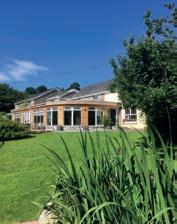
Pressure washer, drying room, map room with local lanes marked, on-site 4x4 course, guides and GPS hire available.
A very popular venue for both individuals and groups of 4x4 enthusiasts


THE DAY WHEN YOUR LANDY doesn’t need you to drive it any more is getting closer all the time. The latest nail in the coffin of the good old days comes from JLR itself, with the announcement of three new global tech hubs as part of its push to develop autonomous vehicles.
The hubs are located in Munich, Bologna and Madrid, cities which were chosen for the local availability of digital engineering skills. JLR already has hubs in the USA, Hungary, Ireland, UK, China and India the company says these additional facilities will create 100 jobs, taking its global engineering team to almost 9000 employees.
The Lake District National Park Authority recently actioned a temporary closure on Stile End. Scheduled to last at least a month, this will allow a programme of work including management of the stone pitching and drainage repairs on the steep section at the Sadgill end.
The Green Lane Association has offered to help with the work, and it has also been involved with the rehabilitation of Breasthigh Road. At the start of March, the Association’s Cumbria reps team met LDNPA officials on a site visit to check the trail’s condition – during
which they also planted around 40 trees on the fellside.
‘This is an interim inspection to see if further work is needed before what will hopefully be the final inspection toward the end of April,’ comments GLASS. ‘We will be assisting on both occasions and helping to plant trees with local GLASS volunteers.

‘Having walked over from the east at the end of January, we are hopeful that a favourable decision will be made at the end of the TTRO so that we can enjoy the ride over Breasthigh once again.’


JAGUAR LAND ROVER is offering more degree apprenticeships in support of this year’s university intake. Half of the apprenticeships the company operates in 2023 will include university education, opening up further education to students who may otherwise have been unable to afford it. The apprenticeships, which carry a salary of around £24,500, are designed to encourage specialism in areas such as electrification and self-driving.
Group Editor Alan Kidd
Art Editor Sam D’Souza
Contributors Tim Gibson,Gary Noskill, Dan Fenn, Paul Looe, Tom Alderney, Gary Martin, Olly Sack
Photographers Steve Taylor, Richard Hair, Harry Hamm, Michelle Thruxton, Vic Peel
Advertising Sales Manager Colin Ashworth Tel: 01283 742969


Publisher Sarah Moss Email: sarah.moss assignment-media.co.uk
While every effort is made to ensure that the contents of The Landy are accurate, Assignment Media Ltd accepts no responsibility for errors or omissions nor the consequences of actions made as a result of these
When responding to any advert in The Landy you should make appropriate enquiries before sending money or entering into a contract. The publishers take reasonable care to ensure advertisers’ probity, but will not be liable for any losses incurred as a result of responding to
Wholesale



Issue 114: June 2023















Price: ca £475 plus VAT • Available from: www.dirtmonkeyoffroadltd.co.uk
THIS FULL WRAP-AROUND STEALTH REAR BUMPER for the Discovery 2 is made from 4mm and 8mm structural steel. Manufactured by Dirt Monkey Off Road, it was designed to follow the curves of the original shape rather than sticking out at awkward angles. Replacing the plastic original, the bumper is fully MIG welded and promises to combine the maximum strength with the lowest possible weight. Finished with a layer of zinc-rich primer followed by Dirt Monkey’s own hard-wearing industrial coating, it locates on the original chassis mounts and comes with E-marked light clusters featuring a Dynamic Sweeping Indicator function. It’s sealed against water and dust ingress and also comes pre-wired with 900mm of insulated cable.
While many Disco 2 owners will fancy their chances with anything to do with spanners, Dirt Monkey suggests that the bumper should be fitted by someone with ‘a level of expertise’ – and a helper, too, as getting it into place is a two-man lift. A qualified auto electrician is recommended to wire in the replacement LED lights, too. The good news is that they can do all of this for you, with a full fitting service offered at the company’s premises in South Yorkshire. Even better news is that this is cheaper than having it delivered –and if you want to talk about making modifications to any Dirt Monkey product, they’re always happy to discuss that with you.


Price: ca £28

Available from: www.britpart.com




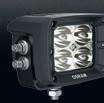


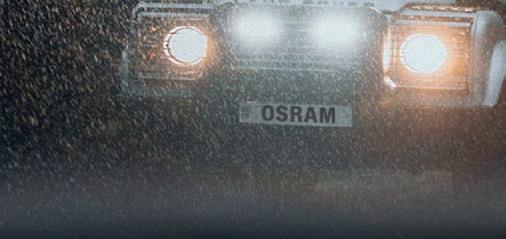


The OSRAM range of intense LED lights are built to step up to the challenge when the going gets tough. Leave the tarmac behind and see clearly what lies ahead of you off the beat track. The LEDriving ® range of robust and stylish spotlights, reversing lights and lightbars can improve near- and far-field vision whilst enhancing driving performance, even under the most extreme conditions. Don’t let the darkness spoil your next adventure.
Available from Allmakes 4x4 and Terrafirma dealers worldwide.
ONE OF THE FIRST THINGS THAT SHOULD BE ON YOUR LIST when ou e e in o o e and a e is to equip yourself with a second spare wheel. Which means that the second in on ou is is i e o e o find somewhere to put it.
Your roof rack may well be home to a en Bu i i s no e e s an o ious ans e i e e nd o e ou ma e e mos o a o ious ans e B s ee a i na o oo s is desi ned o ma e se u in i as easy as possible. is as desi ned i e e e o ie do ns on e ussie om a n s B a in mind u i a so work with other aftermarket eyelets. It features a tether strap and snap lock oo s i B sa s i ee e wheel in place even in the event of the e de a in is ea u e im o es its ability to retain an unmounted tyre a ass oo
The strap combines a 32mm ratchet i mm and mm o es e e in i sna o oo ends i i a a s s a e ained s one me e en means i ou d a e a e u e e o o e ond i s a a i is is B a e a and i s as in a a i is a ed o




To advertise in The Landy, call our team on 01283 553244
We’re on Facebook: www.facebook.com/thelandyuk


Price: ca £90-£115
VAT
Available from: Britpart dealers




THERE WAS A TIME when the words ‘Defender’ and ‘carpet’ belonged together like the words ‘fish’ and ‘bicycle’, but these days it’s almost quite rare to see a 90 or 110 project that doesn’t involve the vehicle’s interior leaving its hose-out roots behind.
These carpet sets from Britpart are for the latter. Made from heavy-duty black 5mm woven pile carpet with pre-cut holes for a precision fit, they’re hard-backed to keep their shape over many years of rugged use.
Britpart says the carpets are easy to fit, with no glue being required – just some strips of double-sided tape, which are supplied where applicable. So no hassle and no mess, either.
The carpets won’t fit over the top of a rubber moulded mat set, however they generally can be used with Dynamat and other soundproofing kits. As well as looking smart, they add further sound deadening too.

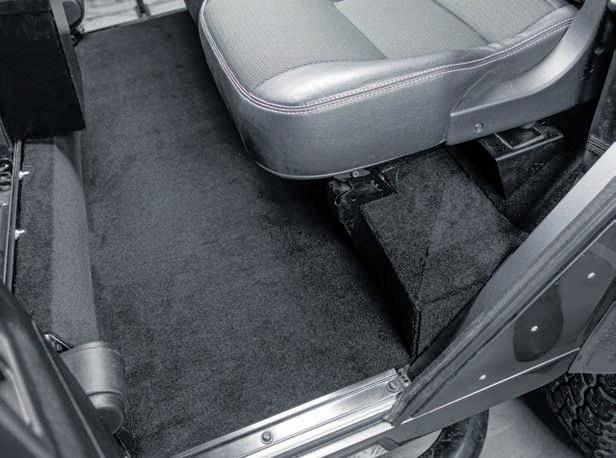
There are two kits for the rear parts of the 110. One, which covers the second row area, comprises a floor carpet and forward facing rear pieces; the other, for the rear of the vehicle, takes care of the floor and wheel boxes.


Where relevant, the mats come with an edged finish to keep things smart.

From: Britpart dealers


FIRST THERE WERE ROOF TENTS. en e e e e e i e a nin s o e e a e e i e a nin a o es ade B and a ai a e ou e B i a dea e ne o ese ne e u e nin o es a e desi ned o o i e us a ian o oad s e ia is s and me e a nin s e omise a a i a a o s e e om e e emen s e e a e a in o sun o ain s o e s in e om an s o n o ds e e i s an en osed s e e o ou s a e anda o e a e and ai s o o e ed s a e o s o a e is a o e is su e o o ide a e sa i e so u ion a ains e sun ain ind and i ade om i densi sm o es e i s o an as e a o es a e fi e e a dan and fi ed i a du a e mu i mes ma a o in e s and o es o e inse ed e e made i ein o ed o ne s oo and a e su ied i ei e s o ee in ou in es men se u e en e ind s in o a e i a a
www.thelandy.co.uk
Issue 114: June 2023
DEFENDER REAR TUBS is one of those companies that specialises in doing one thing and doing it well. If you can’t guess what that thing is, maybe try reading again from the top.
‘We specialise in making replacements for Defenders whose rear tubs have worn out over the years,’ says the company. ‘This gives our customers a stronger and longer lasting tub and brings new life to old Defenders.’
Based in Worcestershire, Defender Rear Tubs boasts more than 30 years’ experience of top-end engineering and fabrication.
‘When looking at buying replacement panels for our own Land Rovers,’ it says, ‘we found that some panels weren’t available – and those we could source were very costly. So we set about making our own!


‘Over time, we have developed the panels to provide a quality body using modern methods and technology while retaining the original features and authenticity.’
Sounds good. The tubs are supplied as a bare, unpainted shell made from 2mm commercial grade aluminium. ‘We use traditional methods for fixing panels together, alongside modern bonding technology,’ says the company. ‘We maintain the authentic spot weld markings which Land Rovers are renowned for.
‘For the main floor, wheelarches and bulkhead we use lock pin and collar aerospace structural fixings and fully sealed pop rivets,’ they continue. ‘For securing side panels and other subcomponents, we use Thatcham Insurance approved two-part panel bond.’
The tubs come pre-drilled with all the necessary holes for bolting up the door components. It’s a different matter at the back, though, where the bolt holes for the rear crossmember are left up to the individual customer – the reason for this being that different manufacturers made them with different hole centres.
Tubs are currently available for 90s and 110s powered by the 200/300 Tdi, TD5 and TDCi engines, and a fitment for the 130 is in development. Built to order for full compatibility, they come serial numbered and covered by a year’s warranty and can be specified with or without cappings fitted these can also be supplied loose for you to fit yourself. In addition, Defender Rear Tubs says it can modify standard units if required.
Prices are very much of the ‘on application’ variety, but it’s a customer-focused so you needn’t fear an immediate assault on your trousers. To find out what this means in pounds and pence, pay a visit to defenderreartubsltd.com and you’ll find all the contact details you could ever want.














To advertise in The Landy, call our team on 01283 553244
We’re on Facebook: www.facebook.com/thelandyuk


www.thelandy.co.uk


Issue 114: June 2023
Words: Tom Alderney
Pics: Ken Watson
Of all the various leaf-sprung vehicles Land Rover made during its first 35 years, the Lightweight has a special place in the heart of many enthusiasts. It’s a rarity now, because the enthusiasts in question tended to beat them to death off-road, but there was a time when they were ten a penny and cutting one up wasn’t the equivalent of lighting your smoke with a tenner.
More modern than a Series I, but similarly slim, the Lightweight was made for trialling. Except it wasn’t – it was made for the army. However popular they proved after demob, Land Rover never did a civvy version.


If they had, Ken Watson reckons the result might well have looked a lot like this. It’s a 1970 IIA Lightweight that’s been ‘civilianised’ – not grafted on to an old Range Rover chassis the way so many were, but much more than just put on the road with an age-related number plate.
Ken’s Lightweight was already a bit of an oddity way before he got his hands on it, in that it was one of the later IIAs with its headlamps mounted in revised wings. Time for a brief bit of history. The total number of Lightweights built between the start of production in 1968 and the vehicle’s replacement by the 90 is 37,897, if you
believe Wikipedia, or around 18,000 if you believe the Military Lightweight Club. Hmmm, tough choice. Of these, 2989 were Series IIAs (Military Lightweight Club) or ‘between 1500 and 2000’ (Wikipedia).

We’d like to hope that none of you are actually taking the word of Wiki over that of a Land Rover club, here. But even just under 3000 from a total of 18,000 says that less than one in six Lightweights were Series IIAs (known as ‘Rover 1’ to the MOD). Of these, fewer still have the later wings. Ken believes that his may have been modified after delivery to its first owners, the Royal Marines.


It was first delivered in 24-volt FFR form, proudly wearing the registration 53 FJ 34, before cutting its teeth with


29 Commando Royal Artillery, alongside the RUC in Dungannon.
Then in early 1972, 29 Regiment was shipped to St George’s Barracks in Malta, along with its vehicles. This was a period when British troops were being gradually withdrawn from the island following the Marlborough House Agreement, and 53 FJ 34 stayed for most of the process. ‘She appears to have remained on station between February 1972 and April 1977 as the various Commando batteries came and went,’ says Ken.

Finally, 53 FJ 34 spent about a year in reserve as part of a NATO rapid reaction force, before being disposed of at the Ruddington MOD auction in July 1978. It went on to the road wearing the registration mark DFK 277T, with the plate relating to the date of first registration as was the custom at that time. That was its identity for about 40 years, until a previous owner to Ken decided that when it needed was a

The Truck Utility Half Ton, or Rover 1, or just ‘Lightweight’ as everybody knows it was the early equivalent of the Wolf – focused, strengthened and highly coveted by enthusiasts of every kind. And like the Wolf, it was only ever available to military customers – though this one has been reimagined as an example of what might have transpired had Land Rover ever done a civvy oneThe original military engine has been replaced by a 2.25-litre petrol unit from a civvy Series III. Apart from having an alternator and electronic ignition, this is identical to the 12-volt version of the engine in the GS-spec Lightweight





personal plate. Needless to say, he retained this when the time came to sell the truck, and with the norm now being for a car’s identity to reflect its year of manufacture it became WW 160J. There can’t be very many motors on the road to have had four different titles in their time.
That’s not all that’s changed about this Lightweight. As we said above, it’s been civilianised (if that wasn’t a word already, it is now) – to the extent that apart from the trademark bumperettes, every trace of its military origins has been removed.
‘Since her demob,’ says Ken, ‘she’s undergone a number of changes and is now a six-seat station wagon with 12-volt electrics.’
Being an FFR, these would originally have been 24-volt to power the radios.
‘Although it’s not difficult to convert the military FFR spec engine to 12-volt GS/civilian spec,’ says Ken, ‘this car has had a complete engine swap for a 2.25 petrol Series III civilian unit. Perhaps the military spec one was sought after by an enthusiast, or alternatively perhaps it was in poor condition?
‘Mechanically, there were no engine design changes between 1961 and 1980. So, apart from having an alternator and electronic ignition, the current engine will be identical to those fitted to 12-volt GS-spec Rover 1s.’
In this way, yes it is civvy but it’s also hardly out of military spec. Elsewhere, on the other hand, things start to get very non-standard.
There’s the fact that it’s a station wagon, for starters. Lightweights with Hard-Top conversions are nothing new, but you don’t often see one done like this with alpine windows, a side-opening rear door and side windows from a 90 Station Wagon. Inside, there are rear bench seats and inertia reel front seatbelts, and while they haven’t been fitted the wiring is in place for a rear wiper and heater rear window.
‘She came to me with a rather non-standard facia arrangement incorporating the top shelf from a civilian Series III above a centrally located Series IIA instrument panel, which is also civilian,’ comments Ken. ‘Although it’s certainly unusual, I grew attached to it.’ As with all the best modifications, converting it back to original wouldn’t be hard – though if you wanted an original Lightweight, it’s hard to see why you’d choose one like this with such a unique character.
This is aided by a rather unusual colour scheme which looks a bit like RAF blue in some lights. Not as obviously civvy as some of the eyeball-burning hues we’ve seen on Lightweights in the past, but definitely a change from the olive drab of old.
Keep looking and you’ll see 205R16 radial tyres, Defender-style door mirrors, freewheeling hubs, a lockable bonnet mounting for the spare wheel,



an LED reversing lamp and, when you climb underneath, parabolic springs with long travel dampers and a stainless steel exhaust.
So it’s definitely not just about an image – this is a Lightweight that’s been built to perform, and keep performing, in civilian life.
To this end, Ken has also had the rear chassis repaired properly.
Note that last word, there… he describes it as ‘extensive, full strength repair work’ which involved grinding off some previously lashed-up patches and removing the rear crossmember before refitting it on the rebuilt chassis rails. Ken reports that the front chassis is ‘reasonably sound for the time being’ and that the bulkhead vent panel, hinge panels and footwells have all been renewed. So has the wiring loom, which was remade using the correct colour cables to match a civilian harness at the back, heavy-duty seven-core trailer cable runs through the offside chassis leg to the rear lights.
Talking of those tyres, Ken found that by a happy fluke, fitting them made the speedo read right. ‘Its gearing should be set up for the original 6.00x16 cross-plies, but having checked using GPS it’s as near as dammit spot on for the 205R16s. I think it is fair to say that in the 1960s and 70s, it was normal for speedos to be very optimistic – and with no easy way to check them, we didn’t realise just how inaccurate they were ’
Most of us who’ve driven a Land Rover of this age are used to assum-
ing that the speedo is probably right at some momentary point during its never ending gyrations back and forth whenever the vehicle is moving, so that sounds pretty impressive. As does the very idea of a civvy Lightweight. It’s very well documented, of course, that the ‘Rover 1’ was created to fit a very specific set of criteria laid down by the MOD. But with its stripped back specifications, narrowed body and axles and easily removable panels, plus, crucially, its strengthened chassis, it can be seen as the Wolf of its day –with a bit of Jeep-style attitude on top. Land Rover made it that way so it could be slung under helicopters and carried two abreast on military transport planes – but in the process they created what, to a great many people, is the coolest, more desirable and most usable leafer there ever was.
Thanks to Ken Watson for his help in compiling this article. His Lightweight is based in Lancashire and is currently is ed o sa e in ou assified ad e s i an as in i e o ou find i on a e o is issue











































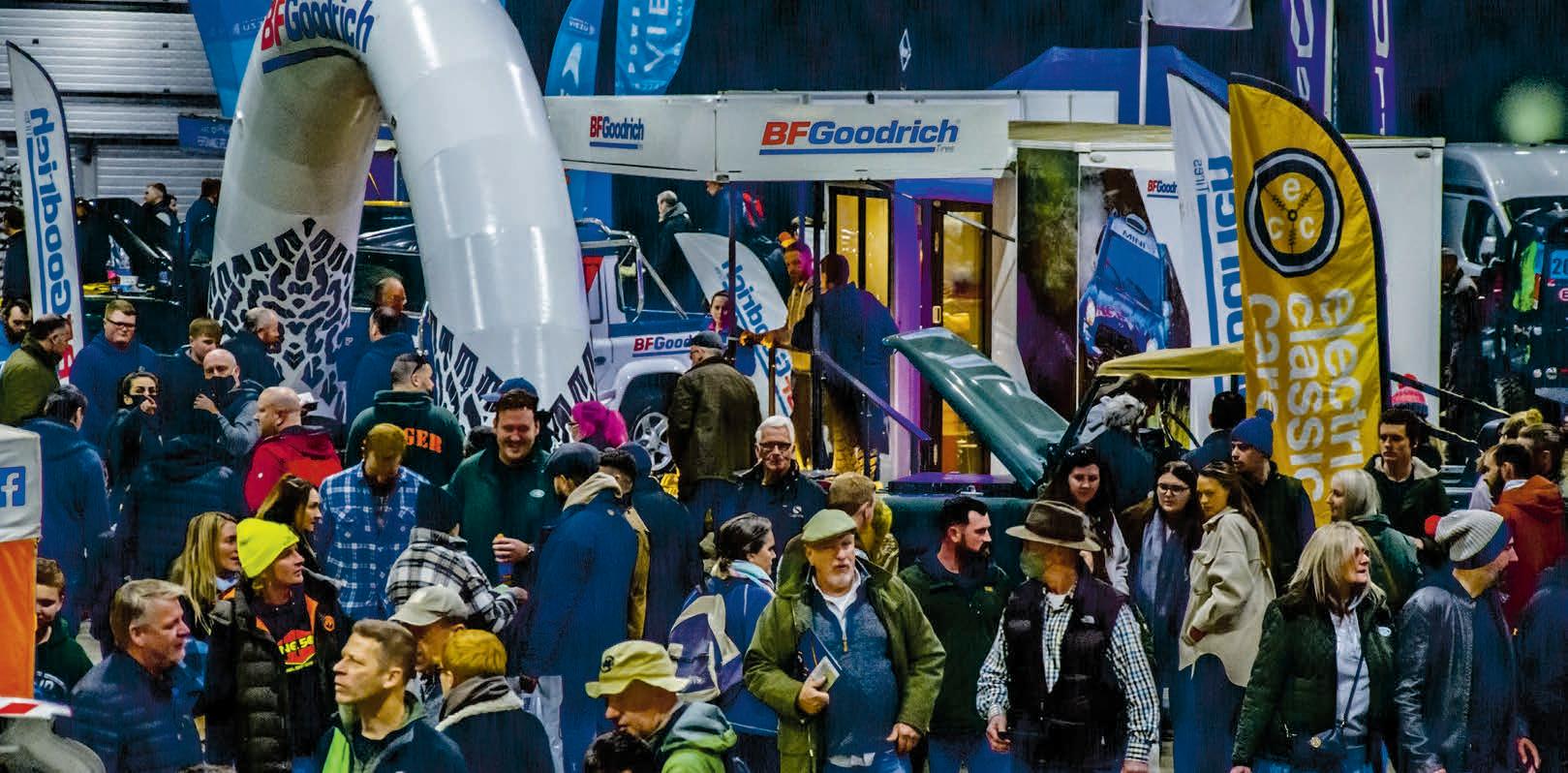
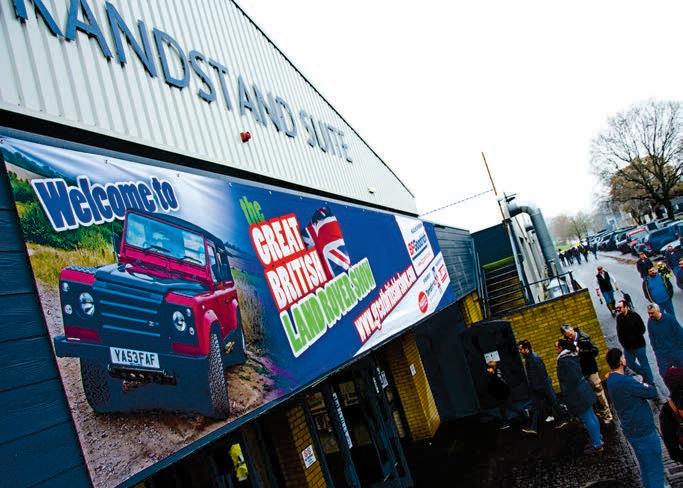
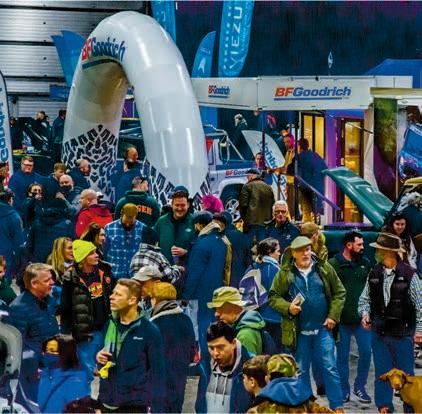






To advertise in The Landy, call our team on 01283 553244



We’re on Facebook: www.facebook.com/thelandyuk



www.thelandy.co.uk






Issue 114: June 2023




Restoring Range Rover Classics is a full-on industry for a few high-end specialists and a small army of private individuals who just love the vehicle. This one is a bit unusual – it’s been revovated alright – but instead of keeping it original in the hope of making a buck, its builders have given it a heart transplant to try and keep it as relevant as possible to people who just want to drive a good Land Rover
Words: Tom Alderney

Restoring a Range Rover Classic is never less than an honourable undertaking. It’s not exactly notable for its uniqueness as an art form, however.
Similarly, replacing major components with better ones is a fine thing, but not a rare thing. But when you see a vehicle that’s been given basically all the vital organs from a different model, that’s more worthy of a raised eyebrow. This is what happened to this particular 1991 Rangey. It’s had a major



Pics: Ken Watson From
refurbishment – but in addition, it’s had the engine, gearbox and transfer case from a Discovery Td5. Not the axles or suspension, though, which is good if you like the articulation that comes from having your rear end pivoting about a good old-fashioned A-frame. The story kicks off with a Range Rover that had suffered the ravages of time. Its chassis was crusty and its lower body was rotten, as they so often are. We don’t know whether its drivetrain had been stripped out, or if


it was just knackered, but with a full Disco 2 set available a project clearly presented itself.
Step one, obviously, was to take the whole thing apart and get the chassis sandblasted and treated. On went a new rear crossmember, too, because it’s not just Defenders that can do them. After that, the guys in the workshop had something to hang a vehicle on – which they did using a full set of 14 new rubber body mounts. The worms had obviously been making a meal of it,
The chassis has been blasted and treated (and fitted with a new rear crossmember), and now you could eat your dinner off of it. Suspension and steering follow the original format, but both have been sorted out with everything from springs, shocks and bump stops to swivels, bushes and PAS box seals all being renewed
because the vehicle is now made up of a new boot floor, including crossmembers, new front and rear arches, new battery trays and new outer floors.

In addition to all this, the inner and outer sills were also renewed and dressed up with new side steps. Above these, on went four new powder-coated door frames. The rubber windscreen and boot window surrounds were renewed, too, as were the upper tailgate gas struts and latches.

Underneath, the vehicle got all new springs, shocks and bumps, along with four drop link arms and Polybushes everywhere. The brake calipers were replaced, along with the discs (with vented and grooved jobs), pads and pipes, as were all four wheel bearings.
Up front, the front axle got new swivels and seals and the steering was renewed as thoroughly as the brakes –using new heavy-duty units for the drag link and track rod as well as a rebuilt PAS box with all new seals.

You’ll have sussed by now that this wasn’t a five-minute job, nor was it a cheap one. And it certainly wasn’t just cosmetic. In fact, while this is certainly a very smart Range Rover, you could say that it hides its light under a bushel somewhat for something that’s been so thoroughly restored.
Under the bodywork, as we’ve already mentioned there’s a Td5 engine, R380 manual box and LT230 transfer case from a Discovery 2. The latter turns the axles via a pair of new heavy-duty propshafts.
The clutch and flywheel were both replaced, as were the master and slave cylinder, water pump and thermostat, and the exhaust manifold was skimmed
and fitted with upgraded studs. Under the driver’s seat, meanwhile, went an extended standalone wiring loom to integrate the new hardware with the vehicle’s existing electrical system.
Under the bonnet, the engine runs new fuel lines and silicone intercooler hoses. The coolant hoses are new, too, as is the heater matrix.
By now, the guys were well on their way to building a good-as-new Range Rover with the heart of a Discovery 2. Or a Discovery 2 clad in the clothes of a good-as-new Range Rover, take your pick. Either way, finishing touches included new bumpers and front bib spoiler, plus new mudguards, headlamps, fog lamps and side rubber trims. To give it a real period feel, the Rangey also gained a powder-coated ball bar, which is about as 1991 as it gets, and a set of clear plastic wind deflectors. The latter were all the rage back then
–though looking at it from side on wouldn’t necessarily transport you straight back to the days of John Major and Gazzamania, because there’s a pair of Td5 badges on the front wings – as well as refurbished alloys from an altogether more modern era.


The result? A handsome looking motor, for sure. If you’re into authenticity, you’d blanch at the mashing-up of Range Rover and Disco 2, and if you’re into off-roading (or any other kind of dedicated use) you’d perhaps be frustrated that its builders didn’t spec it with taller suspension, or a high-angle A-frame joint, or rock sliders, or heavy-duty bumpers, or whatever combination you prefer out of a winch, snorkel, bash guards and so on.
What it comes down to is that the original Range Rover was built to be an everyday car – and this one was rebuilt for exactly the same purpose. It’s still

as classy as ever, in a nicely matured sort of a way, and after everything that’s been done in the restoration it’s well set to last another 30 years.
To us, it looks like the perfect blank canvas. Superior work truck, superior family wagon, superior off-road machine – it could be any of these things, the ‘superior’ part clearly being the constant within its future.




And someone will have the chance to prove us right, because it’s currently for sale in our classifieds. At £22,000, it’s somewhere between the takeyour-chances Range Rovers you see being punted around, and the sell-yourchildren variety you also see if you set your search sliders with a little too much optimism. It’s based across the water in Kilkenny, which sounds like a good excuse for a weekend away, and you’ll find it in the small ads towards the back of this issue of The Landy



Authorised & regulated by the Financial Conduct Authority Call 0800 587 5480



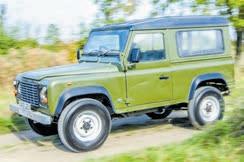
There’s a pattern that runs through Land Rover’s history, of one model after another becoming the off-roader’s favourite until eventually they’re all used up. It happened to every leafer, the firstgen Range Rover, the original Discov-




ery… and now it’s starting to happen to the Disovery 2.

This time, though, there’s a worrying end game in sight. When there are no more Discovery 2s left, what will Land Rover enthusiasts go off-roading in then? The Disco 3 or 4? The Defender?
The new-shape Defender? The P38? All of these share one thing, which is that one way or the other, they’ll cost you an arm and a leg.
The Disco 2 is the last old-school Landy that you can buy and run for not much money. But there are far fewer available now than there used to be –and supply is only going one way.

Of course, buying one is a minefield of rusty chassis and bulkheads, and run-
ning it means living in constant fear of the three amigos. But the Disco 2 is still the affordable Land Rover. For now…
• Based on an unmodified 2003 Discovery TD5 ES. Valued at £5000, unlimited mileage. 50 year old driver, fully comp, £300 excess

The Series I, particularly in its 80” guise, is the most sought-after of
all Land Rovers. Its engineering and design give it real charisma, but parts aren’t readily available. Restoration projects require deep pockets, but see it through and the result will be worth mega bucks. Gone are the days where you could use a Series I as an actual Land Rover. Because with restored examples changing hands
terms, keeping the same 2.25-litre engines throughout the length of its production run.
for millionaire money, preservation is the aim of the game.
The earlier the vehicle, the more it will be worth. The sky’s the limit – but can you really put a price on such an icon?
Pros: Heritage, charm, a true classic, the original Land Rover Cons: Availability of parts, price tag on early 80s
£2500-£30,000
The Series III wasn’t too dissimilar to the Series IIA in mechanical
In 1980, the engines switched to a more durable five-bearing crank rather than the old threebearing setup. The transmission also received syncromesh on all forward gears to make it easier to live with.
They still carry the simplicity of earlier Land Rovers, but can be obtained for a fraction of the price... for now.
Pros: Most affordable way into Series ownership. Still has the Series pedigree. Parts still widely available
Cons: Not yet as desirable as the earlier Series models
Land Rovers. To mimic the civvy Series machines, the Series III model built from 1972 onwards, also had its headlights switched out to the wings.
out from the crowd. They’re a rare breed, though – so if you’ve got one, it’s worth keeping hold of.
The Series II/IIA is more affordable than a Series I, yet it still carries
much of that early charm. Prices are on the increase, however, as these vehicles start to come into their own as collector’s items.
A 2.25 petrol 88” would be our pick, as the diesel engines were underpowered and rather noisy.
The Series II/IIA has a wider stance than its predecessor and adds an extra (thin) layer of

refinement. While the engines have excellent longevity, they need to have been maintained properly. Be thorough in your checks, both under the bonnet and underneath the body.
Pros: A sound investment to restore. Some now MOT exempt
Cons: Bulkheads and chassis rot, springs prone to seizing
rarity – with all the cachet, pride and immense awkwardness that comes with this status.
By ‘rare’, we’re talking about less than 2500 Series IIA FCs in total. And they tended to have a very hard life, so not many have survived to tell the tale.

having heavy-duty ENV axles, but engine-wise they had the familiar 2.25 petrol and diesel lumps. So, don’t expect performance – but do expect to be given an ‘interesting’ time in the workshop…
Pros: A Land Rover like no other, if that’s what you want
These military vehicles can easily be distinguished from regular

Lightweights add an extra dimension to owning a Land Rover. Their military history and details mean you get a truck with more stories to tell – and that stands


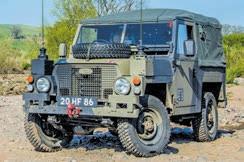
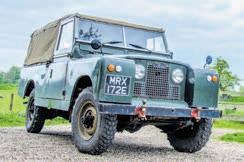
Forward Control Land Rovers are a cult within a cult. They’re a real

Forward-Control models differed from everyday Series IIs by
Cons: Especially brutal to drive, and to find parts
Pros: Not like all the other Land Rovers out there. Military background. Lovely 2.25 petrol
Cons: Appearance isn’t to everyone’s taste. Exclusivity over regular models means they command a price premium
90/110 (1983-1990) £3500-£35,000
also take you just about anywhere in the world.
Early 90s and 110s are starting to be a real collector’s item. But you’ll likely be searching far and wide for a pristine example.
These Land Rovers had coilsprung suspension, new engines and a world-beating level of rugged off-road capability.
Only ever sold to the Army, the 101 became a cult vehicle when
127
A very early 2.25 petrol 90 is a rare thing, and a beautiful one too. But perhaps try for a 2.5 natasp diesel: they’re robust and as simple as they come.
Pros: Excellent parts availability. Easy to work on. Unlimited potential for mods and restos
Cons: Puny engines (V8 apart) Not many left in good condition
The 127 was built on a special production line in Solihull which
the time came for demob. They were flogged off at very low prices and turned into off-road toys –not something you’d do with one today, given the rarity and classic value they’ve taken on.
Compared to the IIA/IIB FC, the 101 is more fun thanks to its V8 engine. It’s still a military tool, though – some still have fixtures
and fittings from their Army life, which adds interest. This is a vehicle for enthusiasts, though, with costs that are sky-high even by Land Rover standards.
Pros: Master of the road. Lovely V8 soundtrack. Everybody who sees one loves it
Cons: Monumental running costs. Expensive to buy, too
took 110 chassis and stretched them. It was designed for military and commercial users and came as a high-capacity double-cab.
These days, it’s very rare to find a 127 that hasn’t been hammered, restored and/or converted, or all three. People looking for a work truck tend to go for a later 130, so the 127 is more of an enthusiast’s
motor. It’s popular for homebrewed overland conversions, too. Almost all 127s have had an engine conversion by now, too. Lots to be wary of, then – but it’s a hell of a lot for your money.
Pros: Enormous size means limitless potential and character Cons: Unwieldy. Sure to have had a colourful life
decades if it’s looked after. Find one that’s had all its oil changes (a tall order) and it’ll go round (and round) the clock.
The Tdi engine, which arrived with the Defender name, can last for
The good thing about the earlier 200Tdi is that it’s simpler than the later 300. What you gain here you lose in refinement, but this is seen by many experts as the best Defender of them all.
The LT77 gearbox in the 200 Tdi is more truck-like than the later R380, and these vehicles didn’t come with bling. Just be sure it’s an original Tdi you’re getting, not an old Discovery conversion.
Pros: The perfect combination of tradition and modernity
Cons: Lots of horrible and/or deceptive ones around

the two are related. It’s much more refined and smoother to drive, though there are more electronics involved so later versions in particular are less of a DIY fix.
become sought after for their light clutch and better shift action.
It was during the Tdi era that Defenders started getting things like alloys, too. You might even find one that’s not been off-road…
When Land Rover introduced the Defender name, it was actually the








130 that changed the most. That’s because unlike the old 127, it was built on a proper chassis of its own rather than a stretched 110 frame.
The advent of the Tdi engine was the making of the 130, too. At last, Land Rover could make them pull properly without returning single-figure fuel economy by using a hard-worked V8.
As a result, you’ll find many more original(ish) 130s than 127s. Some are even still in service with the utility companies they were built for. If you want a Defender for overlanding, look no further.
Pros: A proper truck with huge capabilities in every area Cons: It’s a big lump if you don’t actually need that much size

a strong performer. It does lend itself to being tuned though, so watch out for abused ones and knackered examples that have been pushed beyond the limit.
still be a DIY machine. Parts are in plentiful supply, as is specialist knowledge – and it’s one of the best Land Rovers ever.
The 300 Tdi engine is very different to the 200 unit it replaced, though
The arrival of the 300 Tdi also brought with it the R380 gearbox. This used to have a terrible reputation for relability, but most have been put right by now and they’ve
Pros: Strength and simplicity. Perhaps the definitive Defender Cons: Sure to be very different to when it left the factory
The last Defenders gained modern 2.4 and 2.2 TDCi engines and





smooth six-speed gearboxes, They still had phenomenal off-road ability and were even okay to sit in. Famously, this was the Defender that actually had a dashboard Many people dislike the TDCi, especially the earlier 2.4, but they still change hands for huge money – especially when the likes of Kahn or Twisted have been
The Td5 engine is arguably Land Rover’s most reliable unit and it’s


As with all Defenders, you’ll need a rear crossmember sooner or later – or even a new chassis.


Despite having more electronics than the Tdi, a Td5 Defender can
Pros: Off-road capability, power, overall reliability. Very well suited to being modified
Cons: Rear chassis, premium prices, monstrous road tax on later vehicles


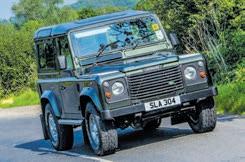
involed. You will always pay a premium for a Puma, and a Tdi or Td5 may turn out to be a better purchase. Even then, though, look after it and you may well never see depreciation.
Pros: Efficiency, creature comforts, off-road prowess
Cons: Price, electronics, TDCi engine is unloved

If the subject of the new Defender comes up in enthusiast circles, try
There aren’t many vehicles as versatile as the 4x4. From general day use to off-roading adventures, your 4WD needs an insurance policy that protects it in every situation. That’s why we offer 4x4 insurance that’s tailored to your needs. Plus, save money with us - our customers have saved an average of 27% when taking out a 4x4 policy with us*
to steer it away on to something safer. Like Brexit, for example.
Much as it may infuriate purists, however, the Defender is actually a very wonderful thing. It’s kind of like an old one, only with space, comfort and equipment.
The big difference is that you can’t work on it yourself. This goes for maintenance and, crucially,











making modifications – a market Land Rover wants to take back and have for itself. It won’t hold its value long-term the way an original-shaper does, either. But this is still a superb vehicle.

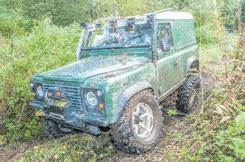
Pros: Comfort, capability, rugged fitness for purpose
Cons: Not cheap to buy. Lacks the old one’s basic charm
Call 0800 587 5480 or visit adrianflux.co.uk
Authorised & regulated by the Financial Conduct Authority

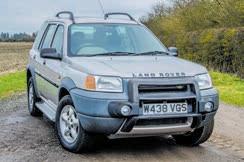
It’s also a notable classic in its own way, as it heralded the start of the company’s modern era. It has its issues, though. The viscous coupling is expensive to replace and can be upset simply by running mismatched tyres.
The 1.8 petrol used to be notorious for head gasket failures. Today’s replacements are much
more robust, but a late diesel is your best bet. Even these can go calamitously wrong, though. This was a more complex car than it needed to be, and buying one for sweeties now doesn’t change that.
Pros: Cheap to buy, no big rust issues, surprisingly able off-road Cons: All sorts of things can go wrong, some very expensively
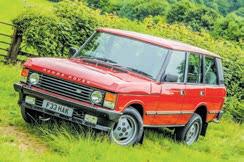
are people who do just that, preferring to invest new-car money in a restoration than spending it on a current model.
The Freelander 2 was a massive improvement on the model
it replaced. It’s a refined and affordable SUV with a strong engine, good equipment and a decent level of practicality.
It’s become one of the most reliable Land Rovers out there, too. But do be aware of the rear diff and Haldex unit for costly outlays.
The 2.2-litre diesel engine is a strong performer, though for a
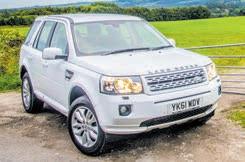
bargain search out one with the unpopular 3.2 petrol unit. Either way, it’s a fine SUV to drive. Prices have fallen since the production ended, too – £10,000 now gets you one worth having.
Pros: Reliability, refinement, economy of diesel engine Cons: Transmissions can wear quickly if used for towing

The original Rangey is a classic you can use everyday – and there
It’s a smart policy, too. An early two-door can cost mega money, but any Classic will appreciate in value if kept in good condition –and sought-after rarities like the CSK and LSE can be a gold mine.
An awful lot of Rangeys have been neglected and/or abused, and you can still buy they cheap. But if you’ve got the skills, and access to parts, restoring one would be the ultimate hobby that pays.
Pros: Most usable classic Land Rover, V8 power, ride quality Cons: Rust, availability of parts for early models
A Mk2 Rangey in good working order is still a sensational car to
own, even today. The problem is that they’re very complex and very, very good at going wrong.
Air suspension failure is the norm. Head gaskets can let go. Electronics are laughably flaky. And parts can cost the earth – as will the labour bills. Perhaps worst of all, nowadays it’s very hard to find one you can be sure hasn’t
spent at least part of its life being worked on by idiots
Still, you’ll get a classy motor with proper off-road and towing skills. It’s becoming a classic, too, and prices are still tiny considering everything you get.
Pros: Luxury, price, a Land Rover that doesn’t rust
Cons: Electrics. Be very afraid
The Mk3 Range Rover hit new heights of luxury and was more re-


liable than the P38. It’ll still cost a lot to run, however, and drivetrain faults and underbody corrosion are not unknown.
The TDV8 engine is sublime, but you’ll pay more to get one –especially the 4.4, though the 3.6 has all the power you need. The V8 petrol, on the other hand, is temptingly cheap. Guess why…
This isn’t a DIY motor, but it certainly is a Range Rover, with brilliant off-road and towing skills. It relies a lot on electronics, but they work wonders – and the deepdown engineering is very robust.
Pros: Great off-road, luxury, image, TDV8 powerplants
Cons: Very complex. Huge running costs
The current Range Rover is a majestic 4x4. All the engines in the
range supply copious amounts of power, and its road manners are absolutely impeccable.
It’s startlingly capable off-road, too, even if getting one muddy would feel like bad form. Most that leave the tarmac probably do so only when their owners are in the mood to blow some grouse out of the sky.
Inside, the Range Rover’s cabin is superb, with sumptuous trim and cutting-edge equipment. Prices are, of course, as immense as the vehicle itself. But if you can afford it, so too is the presence a Rangey will give you.
Pros: Class, luxury, engines, vast all-round capability
Cons: Price



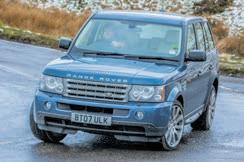
to greater extremes than ever, with lavish equipment and endless opportunities for personalisation.
It’s a supreme lifestyle wagon for the rich: to many of Land Rover’s traditional fans, on the other hand, it’s the supreme irrelevance.
If you can afford one, few cars could be as pleasing. However if you can afford one and you love
Land Rovers, you’re likely to be thinking about how many real ones you could buy with this sort of money. It wouldn’t make a bad way to tow your collection about the place, though…
Pros: Immense prestige, and sublime both to be in and drive Cons: To at least 99% of people it’s utterly divorced from reality
the original, meaning it’s almost economical to run. It feels really nimble and agile on the road, too, and it comes with a range of engines giving it a brisk turn of pace.
Some won’t like the flamboyant posture, while others will love it. Either way, inside the cabin it’s very nearly as luxurious as the full-fat Range Rover.
The only stumbling block with such a fine motor is going to be how to pay for it. Depreciation has started to bring down the purchase price – though you’ll never run one on a shoestring.
Pros: Performance, refinement, glorious interior
Cons: Marmite image. Pricey to buy and run
the masses. Given that it was the company’s fastest-selling vehicle, they clearly hit the brief, even if it wasn’t for the traditional Land Rover owner.
It’s actually still a capable thing off-tarmac – but it’s definitely more at home on the road.
because there are so many out there, used prices are tempting. There’s a Convertible model, too, as well as three and five-door tin-tops. We say stick to the latter, and be sure to get one with 4WD.
Pros: Economy, handling, iconic concept-car image
Hilariously, this is what counts as the affordable way in to owning a
a supreme off-roader as well as being a funky road ride. It doesn’t handle like a sports car, but is agile enough for an SUV.
A Discovery of the same era is far more practical, however, while a full-fat Rangey has more class.
The Sport is still a massively able tow barge, though, in addition to all its other virtues.
You’re looking at a car which many people associate with rich chavs and criminals, however. And being based on the Discovery 3, it can’t help but share that vehicle’s reputation as a money pit.
Pros: Decent performance and all-round dynamics
Cons: A Disco 3 is more usable. Expect horrific running costs
new Range Rover. The Sport is less about being chauffeur driven and more about lording it over other aspirational school runners, but once again it’ll be lovely to drive.
Like the full fat Range Rover (a phrase which has never felt more appropriate), the Sport is available with an old-school V8 engine that gives you racecar performance in
Evoque has adopted a similiar back end to the larger Velar. It’s not just the exterior that mimics the looks of the larger vehicle, however, as the Evoque has gained the latest Touch Pro Duo tech and a hike in quality.


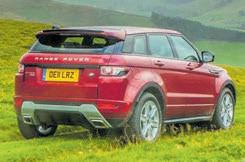
return for NASA-level emissions. Most UK customers with opt for an altogether healthier plug-in hybrid, but they’ll still get a vehicle that’s brutally fast a well as being able to do the normal Range Rover stuff.

Pros: Smooth, refined, comfy… and game for a laugh, too Cons: Still hasn’t quite shed its proceeds-of-crime image
hybrids, available with diesel and petrol engines combining to an electric motor. Only the base D150 Evoque escapes the electrification, and we’d avoid it as it doesn’t have four-wheel drive.
Pros: Feels like a proper Range Rover inside
When the Evoque was launched, it signalled JLR’s intent on hitting
Nevertheless, it is economical by Land Rover standards and





Cons: Cramped rear seats, not as practical as a Disco Sport
Most Range Rovers all look the same at the front now, but the new

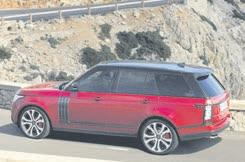
The main highlight of the new Evoque is the fact the majority of the range is made up of mild
Cons: Petrol engine is poor on fuel economy, even as a hybrid
Range Rover (2002-12) £2200-£27,000 Range Rover (2012-22) £20,000-£150,000 The Sport is mechanically similar to the Discovery 3 – meaning it’s The second-generation Range Rover Sport is 400kg lighter than Range Rover Evoque (2019-on) £31,000-£60,500 The Freelander 1 is a cheap gateway into Land Rover ownership. The fifth-generation Range Rover takes its position as a luxury car Range Rover (2022-on) £99,000-£220,000 Range Rover Sport (2022-on) £80,500-£145,000because of its particularly handsome exterior. It’s based upon the same architecture as the Jaguar F-Pace but has greater off-road ability and is available with a wide choice of engines, most of which combine good economy with usable everyday performance.
other models expected to follow the Velar in due course.
But is there a whiff of style over substance? Well, it’s a very good SUV. But you don’t half pay a premium for those suave looks...
with the same 100” wheelbase and a slick body containing a spacious, flexible cabin. It was well equipped and refined, and it came with the wonderful Tdi engine.
The Velar a competent cruiser and has received numerous accolades

The interior is Land Rover’s most advanced cabin to date, with
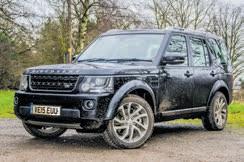


Pros: Stylish design, chic cabin, excellent tech features Cons: Feels like an indulgence, especially at such a high price
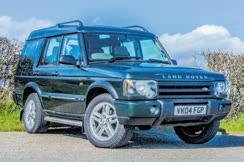
most reliable units ever. It drives well, too – mated to a manual box it has more guts even than the V8 option, which is surprisingly bland but predictably thirsty.
Whereas the Disco 1 was prone to body rust, the D2 is fine here. Instead, its chassis rots like a carrot, especially towards the back end. Also at the back, seven-seat
The original Discovery was based on the Range Rover of the time,



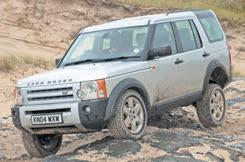
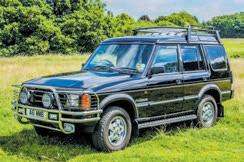
Over time, the Disco’s epic ability meant almost all of them were hammered at playdays. Lower body rust is a big killer, too. So it’s rare to find a good one now,
and when you do they tend to be priced with a lot of optimism. Very early ones in tip-top condition are full-on classics, too. For a sound one to own, we’d look for a tidy 300Tdi.
Pros: Price, practicality, parts availability. Epic off-road ability
Cons: The body rusts like it’s been doused in sea water
models had air-suspension, with all the horrors that brings.
Mainly, D2 owners will tell you about rogue electronics. And leaky sunroofs. They still love their trucks, though, which says a lot.
Pros: Td5 power and reliability, great all-rounder, lots of choice
Cons: Chassis rust, electronics, leaky sunroofs, air suspension



The Disco 3 is an astonishing allround vehicle. It’s good on the road
and capable off-road, genuinely luxurious and a giant of a tow truck, and as well as being able to seat seven adults it can be turned into a van with a totally flat rear load area.
But it was also astonishingly complex, and these days it has a reputation as a money pit. Air suspension and electronic
handbrakes are big sources of woe, cam belts are a body-off job to change and rust is becoming more of an issue. Get a good one, though, and it’s all the car you’ll ever need.
Pros: Good at everything. Lots of accessories available now
Cons: As fragile as you expect, and then some

is basically an evolution of the 3. It looks similar and is still a practicality monster, as well as being hugely impressive on and off-road and a hero in front of a trailer, but despite being only subtly tweaked inside feels far more luxurious.
That hasn’t prevented it from suffering all the same issues as time has gone on. You need to
body and dishes up an appealing all-round blend of comfort, kit and general driving manners.The third row of seats is only suitable for little ‘uns, though, and off-road it’s a Discovery in name only.
It’s a more practical proposition than the closely related Evoque, and you won’t need to live with the fear of Posh Spice jokes. You
start off by buying the best you can possibly afford – and at the top of the market, they don’t come cheap. Get it right, though, and this is as good as a modern Land Rover has ever been.
Pros: Most LR fans’ idea of what a Range Rover should be like Cons: Still a potential money pit, and the best are expensive
might shudder at the price if you’re buying new, though – but on the used market, there are some tidy looking deals to be had, even on high-spec examples.
Pros: More practical than an Evoque, and less vulgar. Seven seats. Capable enough off-road Cons: Back seats only for small mammals. Price of top models
monster. As an all-rounder, at
launch it was the most capable Land Rover on sale – the new Defender will be going some to wrest that crown from it.





All the engines in the range are refined and flexible, and its chassis is remarkably supple for such a big vehicle. There’s no end of electronics working away in the background, but the effect is very

convincing – as is an interior that might make you wonder why you’d bother paying more for a Range Rover. Just be careful not to go wild with the options and end up paying more for a Discovery…
Pros: Immense blend of comfort and practicality
Cons: Feels more like a softroader than a proper Discovery



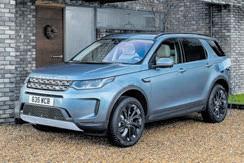
after the first. That’s because once again, it’s related to the Evoque, which was ready for a full new model in 2019.
The Sport is a premium midsized SUV with seven seats and a decent level of off-road ability. It’s a massively popular choice for the school run – and, with the arrival of a plug-in hybrid option last
year, as a company car. Quality has taken a step up from the first model – it’s now a convincing premium vehicle, and the range offers enough choices to suit anybody with the means to buy one.
Pros: Classy and practical cabin, all-round good to drive
Cons: You can get a Defender for the price of some models
 The Disco 2 is powered by the Td5 engine, one of Land Rover’s most
The second-generation Disco Sport came along only four years
The Disco 2 is powered by the Td5 engine, one of Land Rover’s most
The second-generation Disco Sport came along only four years






Series IIA Lightweight (1970). Station wagon. 2.25 petrol taken from a civvy Series III. New carb, EFI, parabolics, 205R16 radials, FWH, stainless exhaust, inertial belts. £12,000. Barnoldswick, Lancs. 07866 544677 06/23/008
Series III 88” ST (1974). 62,805 miles. 200 Tdi. Good chassis and bulkhead. PAS. Recent new springs and shocks, exhaust and Range Rover diffs. Comes with full hardtop. MOT June. £9350. Ashbourne. 07825 915332 05/23/003



Series IIA 109” Station Wagon (1971). 2286cc petrol. Good chassis and bodywork. Roof rack from a 130. Split-charge, USB charger, overdrive. New shocks in 2017. £9595. Northampton. 07770 925165 04/23/004
Series I 80” (1950). 26,900 miles. 2.0 engine. New seats, hood, tyres, brakes. Freshly serviced. Lovely patina, interesting history. Heritage cert. Sry-stored for years. Huge investment potential. £20,500. Malvern. 07446 228704 04/23/001

Series II 88” HT (1960). 200 Tdi, on the button. Overdrive. Chassis solid. New complete doors sills, tyres, rad, lights, seats and complete respray in last year. Last owner 30 years. £8750. Doncaster. 07368 366571 05/23/002

Defender 90 Td5 HT (2001). 139,000 miles. Stage 1 remap, Ashcroft box, Disco 2 transfer case. Raptor dash, on-board air, ATs, full rack, front/rear spots. Extensive history. MOT Jan. £11,000. Bedford. 07985 134914 06/23/001
Defender 90 Td5 HT (2000). 84,000 miles. Clean chassis, no welding, recent service and wax. Sunroof, LEDs, new Sawtooths and tyres, LEDs, side bars, lined interior. Long MOT. May PX. £15,495. Buxton. 07742 155451 06/23/002
Defender 110 2.4 TDCi (2011).


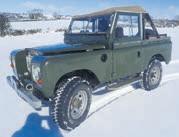

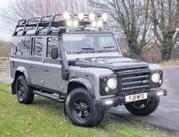


36,700 miles. One owner. Stage 1 remap. New grille, rack, snorkel, spotlights, sports seats, tow bar, full length rear and side tinted windows. MOT Sept. £29,000. Lincoln, 07793 370271 05/23/007
Defender 110 300Tdi Wolf ST (1998). 109,000 miles. Remus upgrade. Original engine (rebuilt). Mechanically great. New exhaust, BFGs, RadHaz kit, pioneer kit. MOT May. £18,000. Weston-superMare. 07896 535749 04/23/006

90 300Tdi (1987). 153,000 miles. LT77 box. Engine and box 10 years ago, all in good order. Nearly new 7.50x16 Michelins, K&N, snorkel, rock sliders. Not pristine but drives well. MOT Feb. £6000. Wantage. 07980 262210 06/23/003
Defender 90 2.5 TD (1989). 82,000 miles. Solid chassis and bulkhead. Fresh Miami Blue and Alpina White paint. New tyres, recent engine service. Recent MOT (no advisories). £14,000. Oldbury. 07480 236664 05/23/004
Defender 110 Td5 Utility (1954). 204,000 miles. Air-con, winch, roof tent, awning. Plus overland trailer with fridge, grille, inverter, electrichook-up. Vehicle £10,950, trailer £7500. £18,995. Tunbridge Wells. 07796 282058 05/23/006
Defender 110 2.4 TDCi (2007). Dry stored for 5 years. Fortune spent with LR specialist, hydraulic winch, bespoke 400l aluminium water tank, new interior, professional respray. MOT Oct. £16,750. Bordon. 07775 597127 04/23/003
Defender 90 300Tdi Wolf SoftTop (1998). First reg 2019. 2000 miles in last 3 years. Regularly serviced, recent cam belt. Great condition. Pioneer tools, rope, jerry can etc. MOT Sept. £15,950. Coventry. 07957 137688 04/23/002
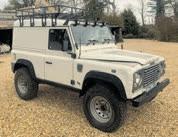


Defender 90 2.4 TDCi SVX (2009). 18,250 miles. Very rare 60th anniversary model. Sat, nav, air-con heated seats. Great condition, completely original, no mechanical issues. One owner. £44,995. Swindon 07515 353588 05/23/005

Range Rover Classic (1991). Full Disco Td5 running gear (engine, manual box and transfer case). All rust prone areas replaced, extensive mechanical and electrical refurbishment. £22,000. Kilkenny. 00353 83 310 3104 06/23/005


Range Rover Pick-up (1993). 150,000 miles. Pro conversion. Discovery Tdi, auto box. Air-con, sunroof, electric seats. Solid chassis (not shortened), mechanically sound. MOT July. £6000. Chester. 07849 522557 05/23/001
Discovery 300Tdi 3-door (1995). 100,000 miles. Sound engine, gearbox, axles. Chassis rust. 4 BFGs (cost £500+). Brink towbar, recent HD battery. Current owner 19 years. No MOT. £1600. Milnthorpe. 07984 173743 04/23/007




















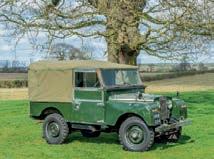


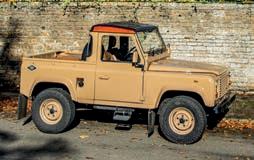
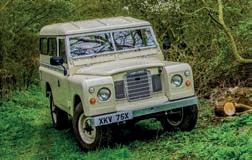








































































































Look after a Land Rover, and it will last forever. This longevity, which is almost unique in the car industry, means a vast number of classic Land Rovers are still on the road today – and not just as classics, but as historical vehicles still working for their living to this day.
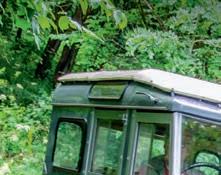

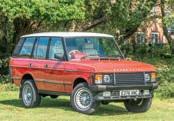








Land Rover: The Great British Classic celebrates this magnificent heritage by focusing on the best of Land Rover from its early days. A high-quality publication from the makers of 4x4 magazine and The Landy newspaper, it covers a broad spectrum of historical vehicles: not just Series I, II and III Land Rovers from the postwar years, but also the first generations of Range Rovers, Discoverys and Freelanders, as well as the 90s and 110s that were later to become the legendary Defender.
Covering the vehicles’ history, spotlighting case studies of restored and otherwise much-loved examples and searching out stories of adventure behind the wheel, Land Rover: The Great British Classicc is a publication for everyone who admires Land Rovers from the early days.





no














































